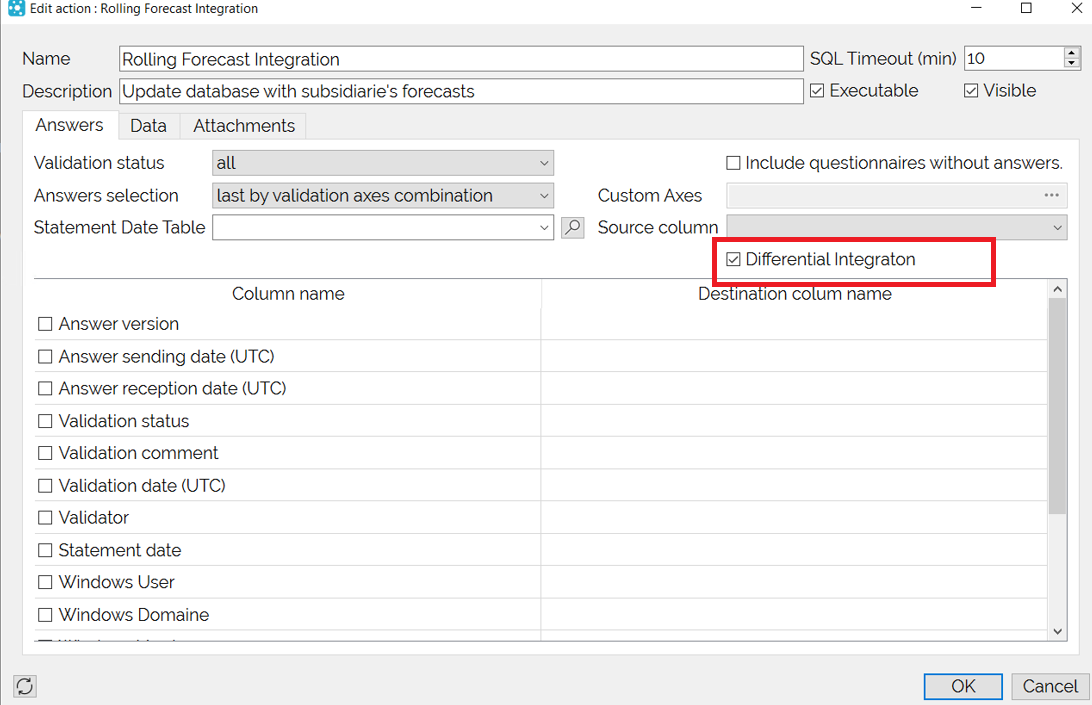How can we help?
Search for answers or browse our knowledge base
Differential integration
By default, the integration takes into account all the entities in a publication. The impact on performance can be significant if the publication has a large number of entities and/or a large volume of data in each document.
Principle
Selecting differential integration
Differential integration can improve integration performance.
When differential integration is enabled, the server records the date of the last integration for each entity. The first integration will include all entities. During subsequent integrations, the server will compare the date of receipt of the last response for each entity with the integration date of the entity. Only the entities for which the date of receipt of the last response is later than the last integration date will be effectively integrated.

Points to watch out for
Differential integration ignores validation statuses. Therefore, you should not use differential integration if your integration action uses a validation status other than “all”.
Furthermore, the recording of integration dates is done within a second. If the receipt of the response and the execution of the integration action occur at the same second, the response may not be integrated, but it will be integrated the next time.


